Thermo Fisher Scientific Surveyor UV/Vis Plus Manuale del proprietario
- Tipo
- Manuale del proprietario

Surveyor UV/Vis Plus
Hardware Manual
60053-97108 Revision C March 2008

© 2007 Thermo Fisher Scientific Inc. All rights reserved.
Surveyor Plus™and ChromQuest™ are trademarks of Thermo Fisher Scientific Inc. in the United States.
Microsoft® and Windows® are registered trademarks of Microsoft Corporation. Delrin®, Teflon®, and Tefzel® are
registered trademarks of E.I. du Pont de Nemours & Company. Kel-F® is a registered trademark of 3M
Company. All other trademarks are the property of Thermo Fisher Scientific Inc. and its subsidiaries.
Thermo Fisher Scientific Inc. provides this document to its customers with a product purchase to use in the
product operation. This document is copyright protected and any reproduction of the whole or any part of this
document is strictly prohibited, except with the written authorization of Thermo Fisher Scientific Inc.
The contents of this document are subject to change without notice. All technical information in this
document is for reference purposes only. System configurations and specifications in this document supersede
all previous information received by the purchaser.
Thermo Fisher Scientific Inc. makes no representations that this document is complete, accurate or error-
free and assumes no responsibility and will not be liable for any errors, omissions, damage or loss that might
result from any use of this document, even if the information in the document is followed properly.
This document is not part of any sales contract between Thermo Fisher Scientific Inc. and a purchaser. This
document shall in no way govern or modify any Terms and Conditions of Sale, which Terms and Conditions of
Sale shall govern all conflicting information between the two documents.
Release history: Revision A released in October 2005. Revision B released in April 2006. Revision C released in
March 2008.
For Research Use Only. Not regulated for medical or veterinary diagnostic use by U.S. Federal Drug
Administration or other competent authorities.

WEEE Compliance
This product is required to comply with the European Union’s Waste Electrical & Electronic
Equipment (WEEE) Directive 2002/96/EC. It is marked with the following symbol:
Thermo Fisher Scientific has contracted with one or more recycling or disposal companies in each
European Union (EU) Member State, and these companies should dispose of or recycle this product.
See www.thermo.com/WEEERoHS for further information on Thermo Fisher Scientific’s compliance
with these Directives and the recyclers in your country.
WEEE Konformität
Dieses Produkt muss die EU Waste Electrical & Electronic Equipment (WEEE) Richtlinie 2002/96/EC
erfüllen. Das Produkt ist durch folgendes Symbol gekennzeichnet:
Thermo Fisher Scientific hat Vereinbarungen mit Verwertungs-/Entsorgungsfirmen in allen EU-
Mitgliedsstaaten getroffen, damit dieses Produkt durch diese Firmen wiederverwertet oder entsorgt
werden kann. Mehr Information über die Einhaltung dieser Anweisungen durch Thermo Fisher
Scientific, über die Verwerter, und weitere Hinweise, die nützlich sind, um die Produkte zu
identifizieren, die unter diese RoHS Anweisung fallen, finden sie unter www.thermo.com/
WEEERoHS.

Conformité DEEE
Ce produit doit être conforme à la directive européenne (2002/96/EC) des Déchets d'Equipements
Electriques et Electroniques (DEEE). Il est marqué par le symbole suivant:
Thermo Fisher Scientific s'est associé avec une ou plusieurs compagnies de recyclage dans chaque état
membre de l’union européenne et ce produit devrait être collecté ou recyclé par celles-ci. Davantage
d'informations sur la conformité de Thermo Fisher Scientific à ces directives, les recycleurs dans votre
pays et les informations sur les produits Thermo Fisher Scientific qui peuvent aider la détection des
substances sujettes à la directive RoHS sont disponibles sur www.thermo.com/WEEERoHS.

Regulatory Compliance
Thermo Fisher Scientific performs complete testing and evaluation of its products to ensure full compliance with
applicable domestic and international regulations. When the system is delivered to you, it meets all pertinent
electromagnetic compatibility (EMC) and safety standards as described below.
EMC Directive 89/336/EEC amended by 92/31/EEC and 93/68/EEC
EMC compliance has been evaluated by Underwriters Laboratories Inc.
Low Voltage Safety Compliance
This device complies with Low Voltage Directive EN 61010-1:2001.
Changes that you make to your system may void compliance with one or more of these EMC and safety standards.
Changes to your system include replacing a part or adding components, options, or peripherals not specifically
authorized and qualified by Thermo Fisher Scientific. To ensure continued compliance with EMC and safety standards,
replacement parts and additional components, options, and peripherals must be ordered from Thermo Fisher Scientific
or one of its authorized representatives.
FCC Compliance Statement
EN 55011 1998 EN 61000-4-3 2002
EN 61000-3-2 1995, A1; 1998, A2; 1998, A14; 2000 EN 61000-4-4 1995, A1; 2001, A2; 2001
IEC 61000-3-2 2000 EN 61000-4-5 1995, A1; 2001
EN 61000-3-3 1995 EN 61000-4-6 1996, A1; 2001
IEC 61000-3-3 1994 EN 61000-4-11 1994, A1; 2001
EN 61326-1 1997 ENV 50204 1995
EN 61000-4-2 1995 A1; 1998 A2; 2001 CISPR 11 1999, A1; 1999, A2; 2002
FCC Class A, CFR 47 Part 15 Subpart B: 2003
THIS DEVICE COMPLIES WITH PART 15 OF THE FCC RULES. OPERATION IS SUBJECT TO
THE FOLLOWING TWO CONDITIONS: (1) THIS DEVICE MAY NOT CAUSE HARMFUL
INTERFERENCE, AND (2) THIS DEVICE MUST ACCEPT ANY INTERFERENCE RECEIVED,
INCLUDING INTERFERENCE THAT MAY CAUSE UNDESIRED OPERATION.

Notice on Lifting and Handling of
Thermo Scientific Instruments
For your safety, and in compliance with international regulations, the physical handling of this Thermo Fisher Scientific
instrument requires a team effort to lift and/or move the instrument. This instrument is too heavy and/or bulky for one
person alone to handle safely.
Notice on the Proper Use of
Thermo Scientific Instruments
In compliance with international regulations: Use of this instrument in a manner not specified by Thermo Fisher
Scientific could impair any protection provided by the instrument.
Notice on the Susceptibility
to Electromagnetic Transmissions
Your instrument is designed to work in a controlled electromagnetic environment. Do not use radio frequency
transmitters, such as mobile phones, in close proximity to the instrument.
For manufacturing location, see the label on the instrument.
CAUTION Read and understand the various precautionary notes, signs, and symbols contained inside
this manual pertaining to the safe use and operation of this product before using the device.

CAUTION Symbol CAUTION VORSICHT ATTENTION PRECAUCION AVVERTENZA
Electric Shock: This instrument uses
high voltages that can cause personal
injury. Before servicing, shut down the
instrument and disconnect the instrument
from line power. Keep the top cover on
while operating the instrument. Do not
remove protective covers from PCBs.
Elektroschock: In diesem Gerät werden
Hochspannungen verwendet, die
Verletzungen verursachen können. Vor
Wartungsarbeiten muß das Gerät
abgeschaltet und vom Netz getrennt
werden. Betreiben Sie Wartungsarbeiten
nicht mit abgenommenem Deckel. Nehmen
Sie die Schutzabdeckung von Leiterplatten
nicht ab.
Choc électrique: L’instrument utilise des
tensions capables d’infliger des blessures
corprelles. L’instrument doit être arrêté et
débranché de la source de courant avant
tout intervention. Ne pas utiliser
l’instrument sans son couvercle. Ne pas
elensver les étuis protecteurs des cartes de
circuits imprimés.
Descarga eléctrica: Este instrumento
utiliza altas tensiones, capaces de
producir lesiones personales. Antes de
dar servicio de mantenimiento al
instrumento, éste debera apagarse y
desconectarse de la línea de alimentacion
eléctrica. No opere el instrumento sin sus
cubiertas exteriores quitadas. No remueva
las cubiertas protectoras de las tarjetas
de circuito impreso.
Shock da folgorazione. L’apparecchio è
alimentato da corrente ad alta tensione
che puo provocare lesioni fisiche. Prima di
effettuare qualsiasi intervento di
manutenzione occorre spegnere ed isolare
l’apparecchio dalla linea elettrica. Non
attivare lo strumento senza lo schermo
superiore. Non togliere i coperchi a
protezione dalle schede di circuito
stampato (PCB).
Chemical: This instrument might contain
hazardous chemicals. Wear gloves when
handling toxic, carcinogenic, mutagenic,
or corrosive or irritant chemicals. Use
approved containers and proper
procedures to dispose waste oil.
Chemikalien: Dieses Gerät kann
gefährliche Chemikalien enthalten. Tragen
Sie Schutzhandschuhe beim Umgang mit
toxischen, karzinogenen, mutagenen oder
ätzenden/reizenden Chemikalien.
Entsorgen Sie verbrauchtes Öl
entsprechend den Vorschriften in den
vorgeschriebenen Behältern.
Chimique: Des produits chemiques
dangereux peuven se trouver dans
l’instrument. Proted dos gants pour
manipuler tous produits chemiques
toxiques, cancérigènes, mutagènes, ou
corrosifs/irritants. Utiliser des récipients
et des procédures homologuées pour se
débarrasser des déchets d’huile.
Química: El instrumento puede contener
productos quimicos peligrosos. Utilice
guantes al manejar productos quimicos
tóxicos, carcinogenos, mutagenos o
corrosivos/irritantes. Utilice recipientes y
procedimientos aprobados para
deshacerse del aceite usado.
Prodotti chimici. Possibile presenza di
sostanze chimiche pericolose
nell’apparecchio. Indossare dei guanti per
maneggiare prodotti chimici tossici,
cancerogeni, mutageni, o
corrosivi/irritanti. Utilizzare contenitori
aprovo e seguire la procedura indicata per
lo smaltimento dei residui di olio.
Heat: Before servicing the instrument,
allow any heated components to cool.
Hitze: Warten Sie erhitzte Komponenten
erst nachdem diese sich abgekühlt haben.
Haute Temperature: Permettre aux
composants chauffés de refroidir avant
tout intervention.
Altas temperaturas: Permita que lop
componentes se enfríen, ante de efectuar
servicio de mantenimiento.
Calore. Attendere che i componenti
riscaldati si raffreddino prima di
effetturare l’intervento di manutenzione.
Fire: Use care when operating the system
in the presence of flammable gases.
Feuer: Beachten Sie die einschlägigen
VorsichtsmaBnahmen, wenn Sie das
System in Gegenwart von entzündbaren
Gasen betreiben.
Incendie: Agir avec précaution lors de
l’utilisation du système en présence de
gaz inflammables.
Fuego: Tenga cuidado al operar el
sistema en presencia de gases
inflamables.
Incendio. Adottare le dovute precauzioni
quando si usa il sistema in presenza di gas
infiammabili.
Eye Hazard: Eye damage could occur
from splattered chemicals or flying
particles. Wear safety glasses when
handling chemicals or servicing the
instrument.
Verletzungsgefahr der Augen:
Verspritzte Chemikalien oder kleine
Partikel können Augenverletzungen
verursachen. Tragen Sie beim Umgang mit
Chemikalien oder bei der Wartung des
Gerätes eine Schutzbrille.
Danger pour les yeux: Dex projections
chimiques, liquides, ou solides peuvent
être dangereuses pour les yeux. Porter des
lunettes de protection lors de toute
manipulationde produit chimique ou pour
toute intervention sur l’instrument.
Peligro par los ojos: Las salicaduras de
productos químicos o particulas que
salten bruscamente pueden causar
lesiones en los ojos. Utilice anteojos
protectores al mnipular productos
químicos o al darle servicio de
mantenimiento al instrumento.
Pericolo per la vista. Gli schizzi di
prodotti chimici o delle particelle presenti
nell’aria potrebbero causare danni alla
vista. Indossare occhiali protettivi quando
si maneggiano prodotti chimici o si
effettuano interventi di manutenzione
sull’apparecchio.
General Hazard: A hazard is present that
is not included in the above categories.
Also, this symbol appears on the
instrument to refer the user to instructions
in this manual.
Allgemeine Gefahr: Es besteht eine
weitere Gefahr, die nicht in den
vorstehenden Kategorien beschrieben ist.
Dieses Symbol wird im Handbuch
auBerdem dazu verwendet, um den
Benutzer auf Anweisungen hinzuweisen.
Danger général: Indique la présence
d;un risque n’appartenant pas aux
catégories citées plus haut. Ce symbole
figure également sur l’instrument pour
renvoyer l’utilisateur aux instructions du
présent manuel.
Peligro general: Significa que existe un
peligro no incluido en las categorias
anteriores. Este simbolo también se utiliza
en el instrumento par referir al usuario a
las instrucciones contenidas en este
manual.
Pericolo generico. Pericolo non
compreso tra le precedenti categorie.
Questo simbolo è utilizzato inoltre
sull’apparecchio per segnalare all’utente
di consultare le istruzioni descritte nel
presente manuale.
When the safety of a procedure is
questionable, contact your local Technical
Support organization for Thermo Fisher
Scientific San Jose Products.
Wenn Sie sich über die Sicherheit eines
Verfahrens im unklaren sind, setzen Sie
sich, bevor Sie fortfahren, mit Ihrer
lokalen technischen
Unterstützungsorganisation für Thermo
Fisher Scientific San Jose Produkte in
Verbindung.
Si la sûreté d’un procédure est incertaine,
avant de continuer, contacter le plus
proche Service Clientèle pour les produits
de Thermo Fisher Scientific San Jose.
Cuando la certidumbre acerca de un
procedimiento sea dudosa, antes de
proseguir, pongase en contacto con la
Oficina de Asistencia Tecnica local para
los productos de Thermo Fisher Scientific
San Jose.
Quando e in dubbio la misura di sicurezza
per una procedura, prima di continuare, si
prega di mettersi in contatto con il
Servizio di Assistenza Tecnica locale per i
prodotti di Thermo Fisher Scientific San
Jose.

CAUTION Symbol CAUTION
Electric Shock: This instrument uses
high voltages that can cause personal
injury. Before servicing, shut down the
instrument and disconnect the instrument
from line power. Keep the top cover on
while operating the instrument. Do not
remove protective covers from PCBs.
Chemical: This instrument might contain
hazardous chemicals. Wear gloves when
handling toxic, carcinogenic, mutagenic,
or corrosive or irritant chemicals. Use
approved containers and proper
procedures to dispose waste oil.
Heat: Before servicing the instrument,
allow any heated components to cool.
Fire: Use care when operating the system
in the presence of flammable gases.
Eye Hazard: Eye damage could occur
from splattered chemicals or flying
particles. Wear safety glasses when
handling chemicals or servicing the
instrument.
General Hazard: A hazard is present that
is not included in the above categories.
Also, this symbol appears on the
instrument to refer the user to instructions
in this manual.
When the safety of a procedure is
questionable, contact your local Technical
Support organization for Thermo Fisher
Scientific San Jose Products.

Thermo Scientific Surveyor UV/Vis Plus Detector Hardware Manual ix
C
Preface . . . . . . . . . . . . . . . . . . . . . . . . . . . . . . . . . . . . . . . . . . . . . . . . . . . . . . . . . . . . . . xi
About This Guide. . . . . . . . . . . . . . . . . . . . . . . . . . . . . . . . . . . . . . . . . . . . . . . .xi
Related Documentation . . . . . . . . . . . . . . . . . . . . . . . . . . . . . . . . . . . . . . . . . . .xi
Safety and Special Notices . . . . . . . . . . . . . . . . . . . . . . . . . . . . . . . . . . . . . . . . .xi
Contacting Us . . . . . . . . . . . . . . . . . . . . . . . . . . . . . . . . . . . . . . . . . . . . . . . . . xii
Chapter 1 Introduction . . . . . . . . . . . . . . . . . . . . . . . . . . . . . . . . . . . . . . . . . . . . . . . . . . . . . . . . . . .1
Functional Description . . . . . . . . . . . . . . . . . . . . . . . . . . . . . . . . . . . . . . . . . . . . 2
LightPipe Flowcell. . . . . . . . . . . . . . . . . . . . . . . . . . . . . . . . . . . . . . . . . . . . . . . . 3
Specifications. . . . . . . . . . . . . . . . . . . . . . . . . . . . . . . . . . . . . . . . . . . . . . . . . . . . 5
Chapter 2 Installation . . . . . . . . . . . . . . . . . . . . . . . . . . . . . . . . . . . . . . . . . . . . . . . . . . . . . . . . . . . .7
Installation Checklist. . . . . . . . . . . . . . . . . . . . . . . . . . . . . . . . . . . . . . . . . . . . . . 8
Unpacking and Inspecting Instrument . . . . . . . . . . . . . . . . . . . . . . . . . . . . . . . . 8
Making Initial Instrument Preparations. . . . . . . . . . . . . . . . . . . . . . . . . . . . . . . . 9
Checking the Power Setting and Fuses . . . . . . . . . . . . . . . . . . . . . . . . . . . . . . . 10
Making Initial Rear Panel Connections . . . . . . . . . . . . . . . . . . . . . . . . . . . . . . . 11
Ethernet Connection. . . . . . . . . . . . . . . . . . . . . . . . . . . . . . . . . . . . . . . . . . . 11
Analog Output Connections . . . . . . . . . . . . . . . . . . . . . . . . . . . . . . . . . . . . . 11
Analog Output Settings. . . . . . . . . . . . . . . . . . . . . . . . . . . . . . . . . . . . . . . . . 13
Unit ID Settings . . . . . . . . . . . . . . . . . . . . . . . . . . . . . . . . . . . . . . . . . . . . . . 13
Remote Communications Connections . . . . . . . . . . . . . . . . . . . . . . . . . . . . . 13
Connecting and Installing the Flow Cell . . . . . . . . . . . . . . . . . . . . . . . . . . . . . . 15
Powering On the Detector for the First Time . . . . . . . . . . . . . . . . . . . . . . . . . . 16
Chapter 3 Maintenance . . . . . . . . . . . . . . . . . . . . . . . . . . . . . . . . . . . . . . . . . . . . . . . . . . . . . . . . .19
Recommendations for Routine Maintenance. . . . . . . . . . . . . . . . . . . . . . . . . . . 20
Tools Required . . . . . . . . . . . . . . . . . . . . . . . . . . . . . . . . . . . . . . . . . . . . . . . . . 20
Cleaning Detector External Surfaces . . . . . . . . . . . . . . . . . . . . . . . . . . . . . . . . . 20
LightPipe Flow Cell. . . . . . . . . . . . . . . . . . . . . . . . . . . . . . . . . . . . . . . . . . . . . . 21
Removing the LightPipe Flow Cell . . . . . . . . . . . . . . . . . . . . . . . . . . . . . . . . 21
Storing the LightPipe Flow Cell . . . . . . . . . . . . . . . . . . . . . . . . . . . . . . . . . . 24
Installing the LightPipe Mounting Assembly. . . . . . . . . . . . . . . . . . . . . . . . . 24
Installing the LightPipe Flow Cell . . . . . . . . . . . . . . . . . . . . . . . . . . . . . . . . 25
Contents

Contents
xSurveyor UV/Vis Plus Detector Hardware Manual Thermo Scientific
Standard Analytical Flow Cell . . . . . . . . . . . . . . . . . . . . . . . . . . . . . . . . . . . . . . 27
Removing the Standard Flow Cell Assembly . . . . . . . . . . . . . . . . . . . . . . . . . 27
Installing the Standard Analytical Flow Cell . . . . . . . . . . . . . . . . . . . . . . . . . 29
Cleaning Flow Cells . . . . . . . . . . . . . . . . . . . . . . . . . . . . . . . . . . . . . . . . . . . . . 30
Cleaning with Organic Solvents . . . . . . . . . . . . . . . . . . . . . . . . . . . . . . . . . . 30
Cleaning with Nitric Acid . . . . . . . . . . . . . . . . . . . . . . . . . . . . . . . . . . . . . . . 31
Replacing the Lamps . . . . . . . . . . . . . . . . . . . . . . . . . . . . . . . . . . . . . . . . . . . . . 32
The Deuterium Lamp . . . . . . . . . . . . . . . . . . . . . . . . . . . . . . . . . . . . . . . . . . 33
The Tungsten Lamp . . . . . . . . . . . . . . . . . . . . . . . . . . . . . . . . . . . . . . . . . . . 35
Chapter 4 Troubleshooting. . . . . . . . . . . . . . . . . . . . . . . . . . . . . . . . . . . . . . . . . . . . . . . . . . . . . . .39
Detector-Related Problems . . . . . . . . . . . . . . . . . . . . . . . . . . . . . . . . . . . . . . . . 40
Error Messages . . . . . . . . . . . . . . . . . . . . . . . . . . . . . . . . . . . . . . . . . . . . . . . . . 44
Chapter 5 Accessories and Replaceable Parts . . . . . . . . . . . . . . . . . . . . . . . . . . . . . . . . . . . . .47
Replaceable Parts. . . . . . . . . . . . . . . . . . . . . . . . . . . . . . . . . . . . . . . . . . . . . . . . 47
Optional Flow Cells for the UV/Vis Detector . . . . . . . . . . . . . . . . . . . . . . . . . . 48
Appendix A Surveyor Firmware Upgrade Utility. . . . . . . . . . . . . . . . . . . . . . . . . . . . . . . . . . . . . .49
Index . . . . . . . . . . . . . . . . . . . . . . . . . . . . . . . . . . . . . . . . . . . . . . . . . . . . . . . . . . . . . . . .53

Thermo Scientific Surveyor UV/Vis Plus Detector Hardware Manual xi
P
Preface
About This Guide
This Surveyor UV/Vis Plus Detector Hardware Manual provides you with information on how
to set up and maintain your Surveyor UV/Vis Plus detector.
Related Documentation
In addition to this guide, Thermo Fisher Scientific provides the following documents for the
Surveyor UV/Vis Plus Detector:
•Surveyor Plus Preinstallation Requirements Guide
•Surveyor Plus Getting Connected Guide
•Surveyor Plus Getting Started with ChromQuest
Safety and Special Notices
Make sure you follow the precautionary statements presented in this guide. The safety and
other special notices appear in boxes.
Safety and special notices include the following:
CAUTION Highlights hazards to humans, property, or the environment. Each
CAUTION notice is accompanied by an appropriate CAUTION symbol.
IMPORTANT Highlights information necessary to prevent damage to software, loss of
data, or invalid test results; or might contain information that is critical for optimal
performance of the system.
Note Highlights information of general interest.
Tip Highlights helpful information that can make a task easier.

Preface
xii Surveyor UV/Vis Plus Detector Hardware Manual Thermo Scientific
Contacting Us
There are several ways to contact Thermo Fisher Scientific for the information you need.
YTo contact Technical Support
Find software updates and utilities to download at www.mssupport.thermo.com.
YTo contact Customer Service for ordering information
YTo copy manuals from the Internet
Go to mssupport.thermo.com and click Customer Manuals in the left margin of the window.
YTo suggest changes to documentation or to Help
• Fill out a reader survey online at www.thermo.com/lcms-techpubs.
• Send an e-mail message to the Technical Publications Editor at
techpubs-lcms@thermofisher.com.
Phone 800-685-9535
Fax 561-688-8736
E-mail TechSupport.C+MS@thermofisher.com
Knowledge base www.thermokb.com
Phone 800-532-4752
Fax 561-688-8731
Web site www.thermo.com/ms

Thermo Scientific Surveyor UV/Vis Plus Detector Hardware Manual 1
1
Introduction
The Surveyor UV/Vis Plus Detector shown in Figure 1 is a member of the Surveyor Plus™
family of LC instruments.
This chapter provides an introduction to the Surveyor UV/Vis Plus Detector.
Figure 1. Surveyor UV/Vis Plus Detector
Contents
•Functional Description
•LightPipe Flowcell
•Specifications

1 Introduction
Functional Description
2Surveyor UV/Vis Plus Detector Hardware Manual Thermo Scientific
Functional Description
The Surveyor UV/Vis Plus Detector is a full-featured, time-programmable,
variable-wavelength UV/Vis (ultraviolet / visible) absorbance detector. It operates in either the
single or dual wavelength mode in the UV or visible ranges.
The UV/Vis detector is a bench top unit for inclusion into the Surveyor LC System. It is
controlled remotely over an Ethernet communications link from a PC using ChromQuest
software.
The UV/Vis detector consists of a dual light source, an optical bench (see Figure 2), dual
photodiode detectors, and several printed circuit boards (PCBs).
Figure 2. The Surveyor UV/Vis Plus Detector optical bench
To provide a complete spectrum of ultraviolet and visible light, the detector uses a deuterium
lamp for the UV range (190-365 nm) and a tungsten lamp for the visible range
(366-800 nm). The lamps are protected by a cover with a special safety interlock to reduce the
possibility of human exposure to harmful UV light. A computer-controlled shutter selects
which lamp is used for sample analysis. The light from the selected lamp goes to a holographic
grating that disperses the light into a spectrum. The grating can be turned to select which
portion of the spectrum and which wavelength of light is used. The alignment of the grating
is controlled by a stepper motor for precise wavelength control. Absorbance linearity is
increased by a system of baffles that reduces stray light in the optical bench.
Tungsten
lamp
Deuterium
lamp
Sample
photodiode
Reference
photodiode
Lens
Flow cell
Beamsplitter
Shutter
Grating

1 Introduction
LightPipe Flowcell
Thermo Scientific Surveyor UV/Vis Plus Detector Hardware Manual 3
From the grating, the light travels to a fiber optic beamsplitter, where a portion of the light is
redirected to a reference photodiode. The signal from the reference photodiode is used to
compensate for changes in lamp intensity and helps to maintain consistent performance as the
lamp performance varies. From the beamsplitter, most of the light passes through a lens and
then on through the flow cell and onto the sample photodiode. The light falling on the
sample photodiode is then processed by the analog PC board and converted into data that can
be analyzed by the computer.
The available flow cell options include:
• Standard analytical flow cell with a 10 mm pathlength
• LightPipe flow cell with a 50 mm pathlength
Other flow cells can also be used in the detector. See Tabl e 3.
LEDs on the front of the module keep the user informed of power, communications, run, and
lamp status.
LightPipe Flowcell
The Surveyor UV/Vis Plus Detector can be ordered with a 50 mm LightPipe flowcell.
The internal bore of the LightPipe flowcell is 50 mm long and has a volume of 10 μL. The
5 cm optical pathlength produces a signal five times that of a conventional 1 cm flowcell,
while the low internal volume of 10 μL minimizes band broadening. A special low refractive
index coating of the internal bore ensures a high optical throughput and minimizes
short-term noise.
Mobile phase enters the LightPipe flowcell through a port in the bottom of the flowcell and
exits through a port in the top of the flowcell. See Figure 3. Directing the flow from the
bottom to the top of the flowcell reduces the development of air bubbles.
Figure 3. Schematic of LightPipe flowcell, showing the internal flowpath
Outlet port
Inlet port 50 mm flowpath
Alignment slot

1 Introduction
LightPipe Flowcell
4Surveyor UV/Vis Plus Detector Hardware Manual Thermo Scientific
Sensitive optical fibers are exposed at both ends of the flowcell as shown in Figure 4. Thermo
Fisher Scientific ships the LightPipe flowcell with end caps to protect these optical fibers. See
Figure 5. Leave these protective end caps in place until you install the LightPipe flowcell.
Replace the protective end caps for storage if you remove the LightPipe flowcell from the
detector.
Figure 4. End of LightPipe flowcell, showing the sensitive optical fiber
Figure 5. LightPipe flowcell with protective end caps
CAUTION Do not touch the ends of the LightPipe flowcell. Doing so could damage the
sensitive optical fibers. If you must grasp the ends of the LightPipe flowcell, wear clean,
talc-free gloves.
Optical fiber
Tubing port
Protective end caps
for storage

1 Introduction
Specifications
Thermo Scientific Surveyor UV/Vis Plus Detector Hardware Manual 5
Specifications
Light Source: Deuterium and tungsten lamps, re-aligned
Wavelength Range: 190 nm to 800 nm
•D
2 Lamp: 190 to 365 nm
• W Lamp: 366 to 800 nm
Wavelength Accuracy: ±1 nm at 254 nm and 656 nm
Spectral Bandwidth: 6 nm
Absorbance Range: 0.0005 AUFS to +3.0 AUFS
Short Term Noise*: • 6 μAU/cm at 254 nm, 1 s rise time, single wavelength mode
(50 mm LightPipe flow cell)
• 20 μAU/cm at 254 nm, 1 s rise time, single wavelength mode
(10 mm standard analytical flow cell)
Drift*:•≤ 1 mAU/h at 254 nm and 546 nm
(50 mm LightPipe flow cell)
•≤ 0.1 mAU/h at 254 nm and 546 nm
(10 mm standard analytical flow cell)
Warm-up: 90 min to meet noise and drift specifications
Linearity: deviation ≤5% up to 2.0 AU at 256 nm
Scan Rate: 4, 5, 6.67, 10, or 20 Hz (user selectable)
Rise Time: 0, 0.1, 0.2, 0.5, 1, 2, 3, 4, or 5 s (user selectable)
Cell Dimensions: • 10 mm, 15 μL standard analytical
•50mm, 10 μL LightPipe
Cell Pressure Rating: 1000 psi
Analog Outputs (2): Unattenuated at 10 mV/AU, 100 mV/AU, or 1.0 V/AU
Remote Controls: Start, Zero, RJ45 Ethernet interface for ChromQuest
Dimensions: 18 cm (7.1 in.) ×36 cm (14.2 in.) ×47 cm (18.5 in.) (h × w × d)
Weight: 19.5 kg (43 lbs)
Power Requirements: 100/115 or 230 V ac; 50/60 Hz, 225 VA max.
Fuses: • 2.5 A at 100/115 V ac (slo-blo)
• 1.25 A at 230 V ac (slo-blo)
Operating Temperature: +10 to +30 °C
Storage Temperature: - 40 to +70 °C
Operating Humidity: 5% to 95% non-condensing relative humidity
Product Certification: CE, TUV-C/US, FCC (EMI)
*According to ASTM E1657-94 “Standard Practice for Testing Variable-Wavelength Photometric Detectors Used in Liquid Chromatography” (for
50 mm flow cell, 5 nm bandwidth, 2 sec rise time, and MeOH at 1 mL/min.).


Thermo Scientific Surveyor UV/Vis Plus Detector Hardware Manual 7
2
Installation
This chapter describes the initial installation of your Surveyor UV/Vis Plus Detector,
including connection to other chromatographic instrumentation. The Installation Checklist,
on the back of this page, is an abbreviated version of this chapter and can be used as a quick
reference of how to conduct a successful installation. Make a copy of the checklist and fill it
out when the installation is complete. Include the completed checklist in your maintenance
records.
Note Perform the installation in the sequence presented on the Installation Checklist and
detailed in this chapter.
Contents
•Installation Checklist
•Unpacking and Inspecting Instrument
•Making Initial Instrument Preparations
•Checking the Power Setting and Fuses
•Making Initial Rear Panel Connections
•Connecting and Installing the Flow Cell
•Powering On the Detector for the First Time

2 Installation
Installation Checklist
8Surveyor UV/Vis Plus Detector Hardware Manual Thermo Scientific
Installation Checklist
The following installation checklist is a brief summary of the steps that you need to complete
for the proper installation of your Surveyor UV/Vis Plus Detector:
Unpacking and Inspecting Instrument
Carefully remove the detector from the shipping container and inspect both the detector and
the packaging for any signs of damage. If you find any damage, save the shipping materials
and immediately contact the shipping company.
The shipping container should contain the following items:
• Surveyor UV/Vis Plus Detector
• Accessory kit
Detectors ordered with a standard 10 mm flow cell arrive with the flow cell installed in the
detector. Detectors ordered with the 50 mm LightPipe are shipped with the LightPipe
packaged in the accessory kit.
The accessory kit (P/N 60053-62004) contains the items listed in Tab le 1. Carefully check to
make sure you have received all the items listed on the packing list. If any items are missing,
contact your Thermo Fisher Scientific representative immediately.
UUnpack and inspect your instrument (page 8).
URead the safety notices in the preface of this manual.
UMake the initial instrument preparations (page 8).
UCheck the power settings and fuses (page 10).
UMake the initial rear panel connections (page 11)
UConnect and install the flow cell (page 15)
UPower on the detector for the first time (page 16)
UDownload the Surveyor UV/Vis Plus Detector firmware, if required (Appendix A,
“Surveyor Firmware Upgrade Utility.” )
This Surveyor UV/Vis Plus Detector was installed by:
(Name) (Date)
La pagina si sta caricando...
La pagina si sta caricando...
La pagina si sta caricando...
La pagina si sta caricando...
La pagina si sta caricando...
La pagina si sta caricando...
La pagina si sta caricando...
La pagina si sta caricando...
La pagina si sta caricando...
La pagina si sta caricando...
La pagina si sta caricando...
La pagina si sta caricando...
La pagina si sta caricando...
La pagina si sta caricando...
La pagina si sta caricando...
La pagina si sta caricando...
La pagina si sta caricando...
La pagina si sta caricando...
La pagina si sta caricando...
La pagina si sta caricando...
La pagina si sta caricando...
La pagina si sta caricando...
La pagina si sta caricando...
La pagina si sta caricando...
La pagina si sta caricando...
La pagina si sta caricando...
La pagina si sta caricando...
La pagina si sta caricando...
La pagina si sta caricando...
La pagina si sta caricando...
La pagina si sta caricando...
La pagina si sta caricando...
La pagina si sta caricando...
La pagina si sta caricando...
La pagina si sta caricando...
La pagina si sta caricando...
La pagina si sta caricando...
La pagina si sta caricando...
La pagina si sta caricando...
La pagina si sta caricando...
La pagina si sta caricando...
La pagina si sta caricando...
La pagina si sta caricando...
La pagina si sta caricando...
La pagina si sta caricando...
La pagina si sta caricando...
La pagina si sta caricando...
La pagina si sta caricando...
-
 1
1
-
 2
2
-
 3
3
-
 4
4
-
 5
5
-
 6
6
-
 7
7
-
 8
8
-
 9
9
-
 10
10
-
 11
11
-
 12
12
-
 13
13
-
 14
14
-
 15
15
-
 16
16
-
 17
17
-
 18
18
-
 19
19
-
 20
20
-
 21
21
-
 22
22
-
 23
23
-
 24
24
-
 25
25
-
 26
26
-
 27
27
-
 28
28
-
 29
29
-
 30
30
-
 31
31
-
 32
32
-
 33
33
-
 34
34
-
 35
35
-
 36
36
-
 37
37
-
 38
38
-
 39
39
-
 40
40
-
 41
41
-
 42
42
-
 43
43
-
 44
44
-
 45
45
-
 46
46
-
 47
47
-
 48
48
-
 49
49
-
 50
50
-
 51
51
-
 52
52
-
 53
53
-
 54
54
-
 55
55
-
 56
56
-
 57
57
-
 58
58
-
 59
59
-
 60
60
-
 61
61
-
 62
62
-
 63
63
-
 64
64
-
 65
65
-
 66
66
-
 67
67
-
 68
68
Thermo Fisher Scientific Surveyor UV/Vis Plus Manuale del proprietario
- Tipo
- Manuale del proprietario
in altre lingue
Documenti correlati
-
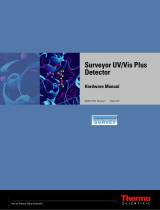 Thermo Fisher Scientific Surveyor UV/Vis Plus Manuale del proprietario
Thermo Fisher Scientific Surveyor UV/Vis Plus Manuale del proprietario
-
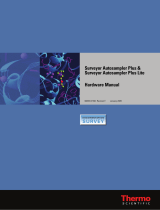 Thermo Fisher Scientific Surveyor Autosampler Plus & Surveyor Autosampler Plus Lite Manuale del proprietario
Thermo Fisher Scientific Surveyor Autosampler Plus & Surveyor Autosampler Plus Lite Manuale del proprietario
-
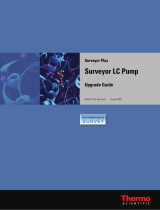 Thermo Fisher Scientific Surveyor Plus Manuale del proprietario
Thermo Fisher Scientific Surveyor Plus Manuale del proprietario
-
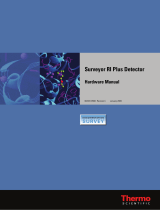 Thermo Fisher Scientific Surveyor RI Plus Manuale del proprietario
Thermo Fisher Scientific Surveyor RI Plus Manuale del proprietario
-
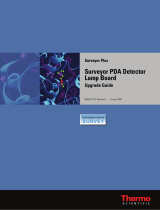 Thermo Fisher Scientific Surveyor Plus Manuale del proprietario
Thermo Fisher Scientific Surveyor Plus Manuale del proprietario
-
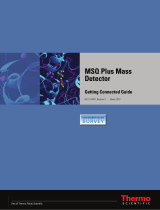 Thermo Fisher Scientific MSQ Plus Mass Guida utente
Thermo Fisher Scientific MSQ Plus Mass Guida utente
-
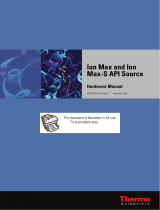 Thermo Fisher Scientific Ion Max and Ion Max-S API Source Manuale del proprietario
Thermo Fisher Scientific Ion Max and Ion Max-S API Source Manuale del proprietario
-
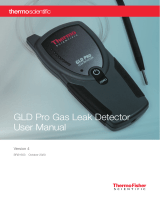 Thermo Fisher Scientific GLD Pro Gas Leak Manuale utente
Thermo Fisher Scientific GLD Pro Gas Leak Manuale utente
-
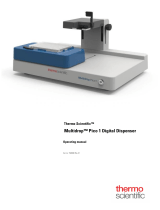 Thermo Fisher Scientific Multidrop™ Pico 1 Digital Dispenser Istruzioni per l'uso
Thermo Fisher Scientific Multidrop™ Pico 1 Digital Dispenser Istruzioni per l'uso
-
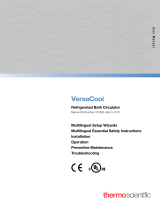 Thermo Fisher Scientific VersaCool Manuale utente
Thermo Fisher Scientific VersaCool Manuale utente














































































